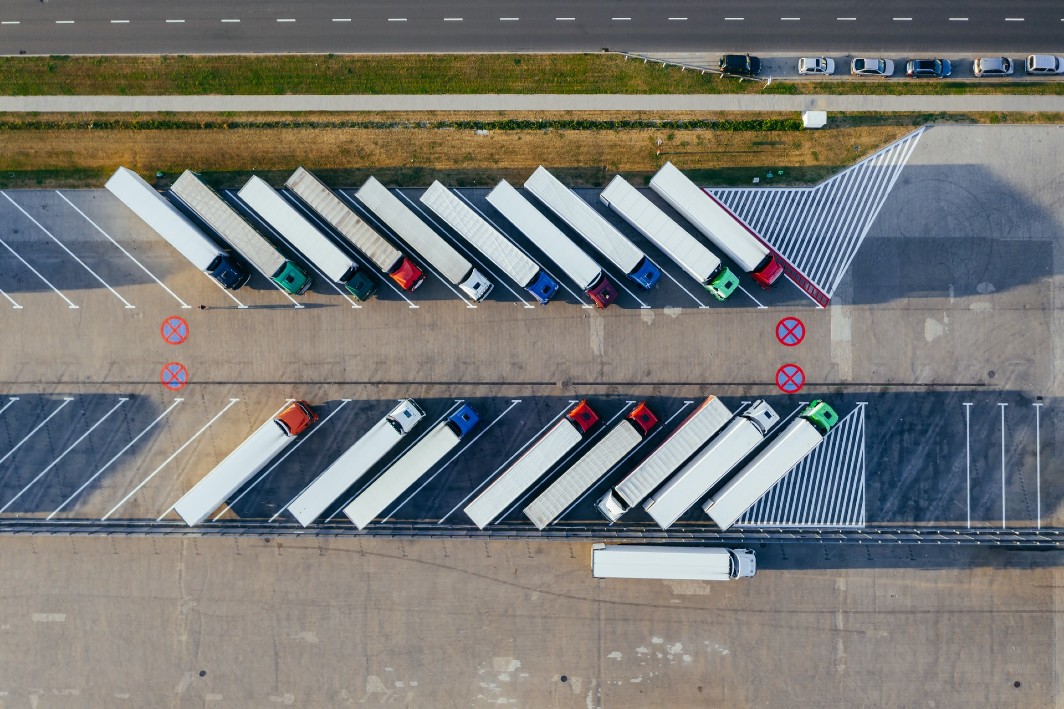HGVs: how will businesses decarbonise their road freight?
The importance of HGVs to the UK economy has been in the spotlight recently, as driver shortages affect supply chains and the government scrambles to address the problem. The road freight sector underpins many aspects of life we take for granted, transporting 98% of all our food and agricultural products.
But this crucial sector is also an outsize contributor to the UK’s greenhouse gas emissions. Despite making up less than 6% of road traffic, HGVs account for 18% of the UK’s road transport emissions. The government’s latest move to decarbonise the sector is a planned ban on the sale of new diesel lorries by 2040. But with this ban nearly two decades away, and over 99% of lorries currently running on diesel, what will businesses be doing to decarbonise their road freight in the meantime?
Investing in electric
Research from the Stockholm Environment Institute has found that electrification of HGVs is becoming a lot more realistic, thanks to improvements in charging technology. The researchers believe that “current battery technology is close to a threshold where electric trucks become feasible”. Until now, the perception has been that larger HGVs will require unfeasibly huge batteries to cover long distances, but the Swedish researchers believe that we are looking at the problem the wrong way: smaller batteries are realistic if the driver has access to fast, frequent charging.
In Switzerland, brewery giant Carlsberg Group recently announced that it has invested in 20 new 26-tonne electric trucks. They have a range of 200km and are powered by renewable energy.
Here in the UK, the Department for Transport has launched a £20 million series of zero emission road freight trials. As well as research into battery electric lorries and hydrogen, it will be using a stretch of road near Scunthorpe to trial an “electric road” system that uses overhead wires to charge HGVs.
Cleaner diesel engines
Upgrading to a cleaner diesel engine is an option for fleet owners who want to cut emissions but don’t feel that electric is feasible yet. There is serious potential for improvement here: new diesel lorries generate 80% less nitrogen oxide than some of the older lorries on the roads. Previously, lorries meeting the latest standards were rewarded by a 10% reduction in their HGV levy, but the levy is currently suspended anyway to support the haulage sector.
Low-carbon fuels
Bio-CNG (compressed natural gas from natural sources) is a greener alternative to diesel that may become a key transitional fuel for the sector. This year’s revised Renewable Energy Directive (RED2) allows certain feedstocks to yield net-negative greenhouse gas emissions, because they prevent methane from being released into the atmosphere. This means that businesses using bio-CNG based on these feedstocks can claim emissions savings of over 100%.
It’s also economical. According to CNG Fuels, which is currently building the world’s largest bio-CNG refuelling station near Bristol, bio-CNG can be up to 40% cheaper than diesel.
Unfortunately, diesel HGVs cannot be retrofitted to run on CNG, so fleet managers choosing this option would need to invest in new vehicles. CNG-compatible HGVs are slightly more expensive, but the lower cost of the fuel makes up for this after about a year. There are also other benefits, such as quieter running. The Royal Mail has already purchased 29 trucks fuelled by bio-CNG.
It is likely that the number of CNG refuelling stations will grow significantly over the next couple of years. Earlier this year, the John Lewis Partnership opened its own biomethane filling station at its Bracknell headquarters, built in collaboration with gas multinational Air Liquide. Other businesses may follow suit, and in the meantime CNG Fuels plans to build 14 more refuelling stations in addition to the two it already operates.
Efficiency measures
The Department for Transport estimates that about 28% of HGV travel in the UK involves empty vehicles. The bigger the vehicle, the more likely it is to be empty. If your business uses an intensity ratio in its carbon reporting such as emissions per mile travelled, there is great potential for improvement here without upgrading any of your fleet. We can expect to see businesses optimising their logistics to reduce empty running, perhaps through back-hauling more goods (to reduce empty return journeys) and/or load-sharing. This will involve greater collaboration with other businesses and greater complexity, but it is an obvious transitional step for businesses that aren’t ready to invest in new vehicles.
Hydrogen
The Climate Change Committee has predicted that hydrogen will be important for decarbonising long-distance HGVs in the next few years, and the government is exploring it as one of the options in its low-carbon road freight trials. Refuelling takes about as long as filling up with diesel because it is a similar process: using a nozzle to deliver compressed hydrogen into the pressure tank.
Science multinational Johnson Matthey recently told the Science and Technology Select Committee of the House of Lords that the cost of ownership for HGVs powered by hydrogen fuel cells “is expected to drop below that of diesel trucks in the second half of the 2020s”.
But hydrogen is currently not fulfilling its purpose of cutting emissions in the transport sector, because over 99% of it is still produced using fossil fuels. For hydrogen to become a practical route to decarbonising road freight, we would need to drastically increase the proportion of green hydrogen.
The Office for Low Emission Vehicles published a study last year that explored the option of modifying diesel engines to run on a mix of hydrogen and diesel. The results suggested that with green hydrogen, tailpipe greenhouse gas emissions could be reduced by up to 35%, making it a promising transitional option.
Exploring alternatives
The future of road freight has been described as a “three-horse race” between hydrogen, battery electric and zero-carbon fuels. But there are alternatives to heavy-duty road transport. Both waterways and rail have great potential: the Thames Tideway project alone caused over 55,000 lorry journeys to be avoided in its first two years of operation. The biggest barrier to tapping this potential is currently the lack of infrastructure.
Some businesses are also exploring the potential of smaller vehicles for “last mile” deliveries, such as electric vans and even electric cargo bikes. One London study found that cargo bikes are 1.6 times faster than vans in high-traffic urban environments.
The government will soon have to make a decision about which horse to back. A lot will depend on the outcome of the research currently being carried out by the Department of Transport. Businesses may be reluctant to make long-term investments without that certainty, but many will move forward with cutting freight emissions through the tried-and-tested transitional technologies already available.













